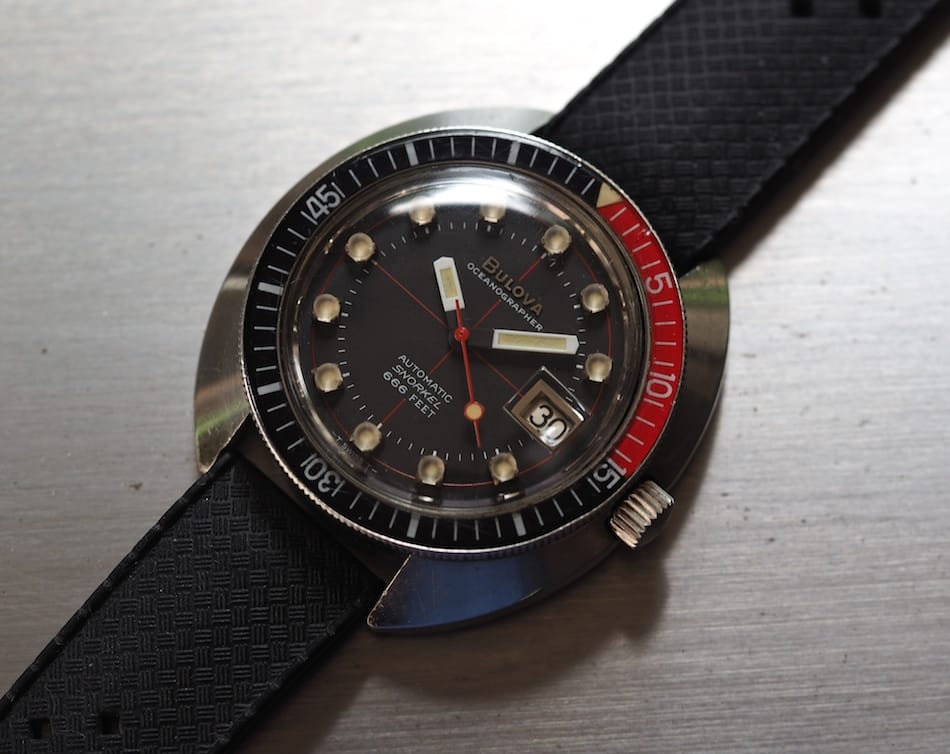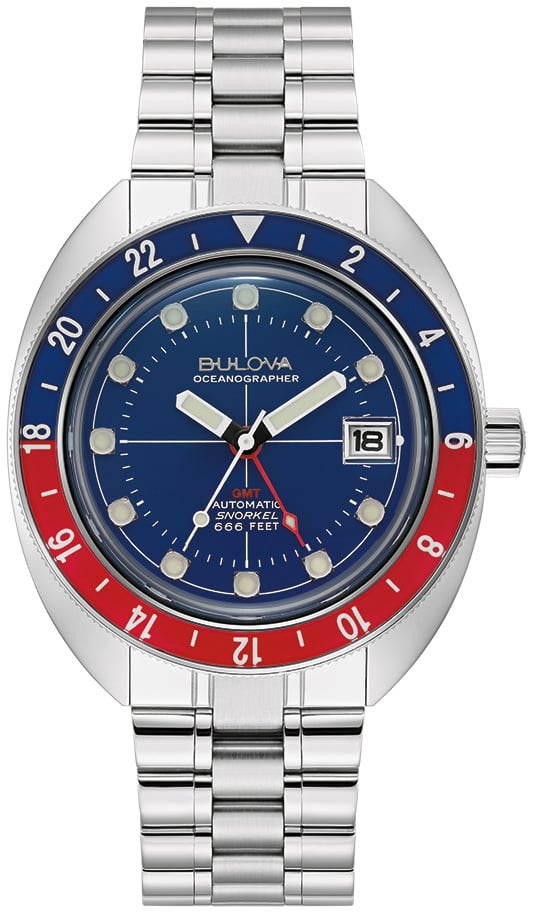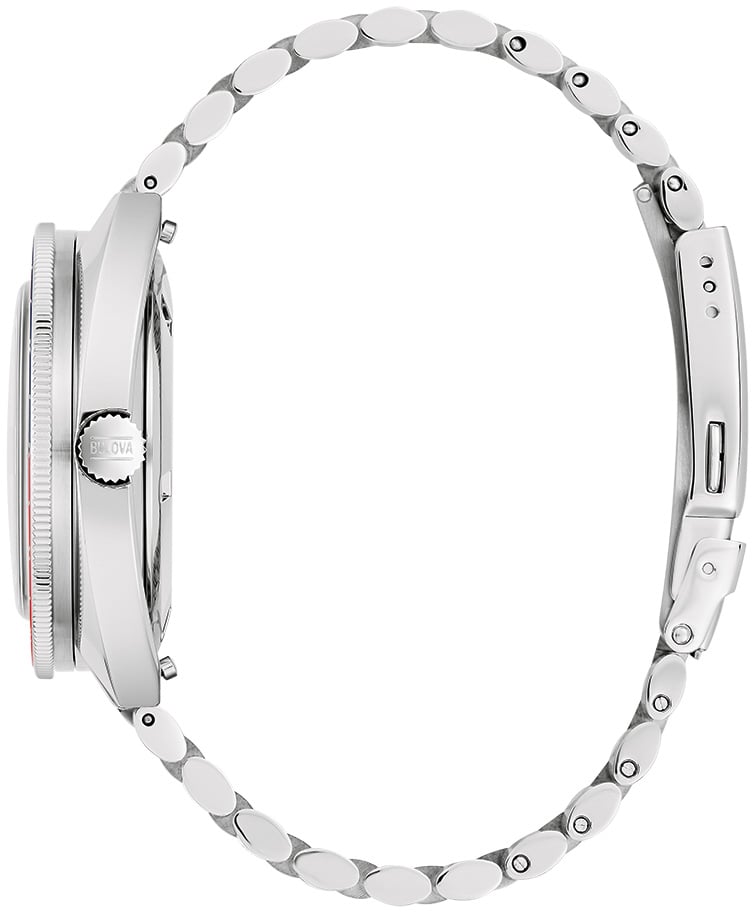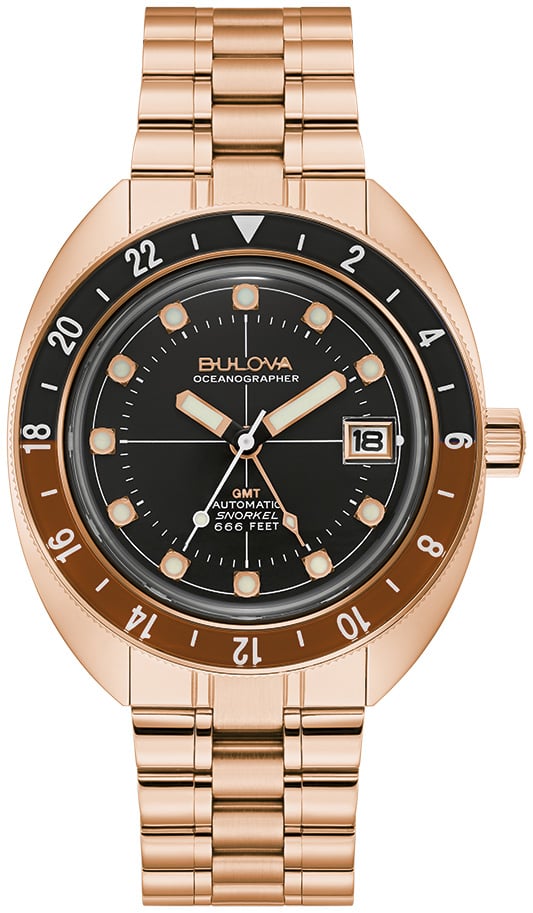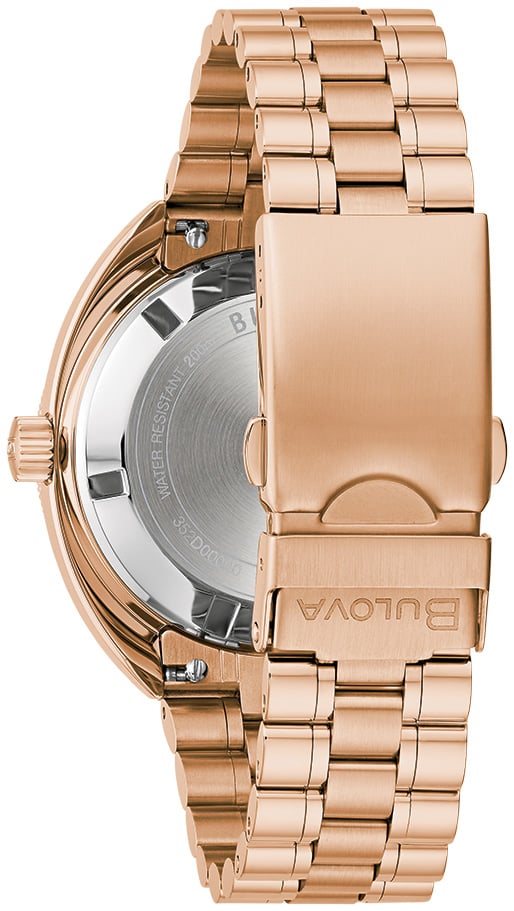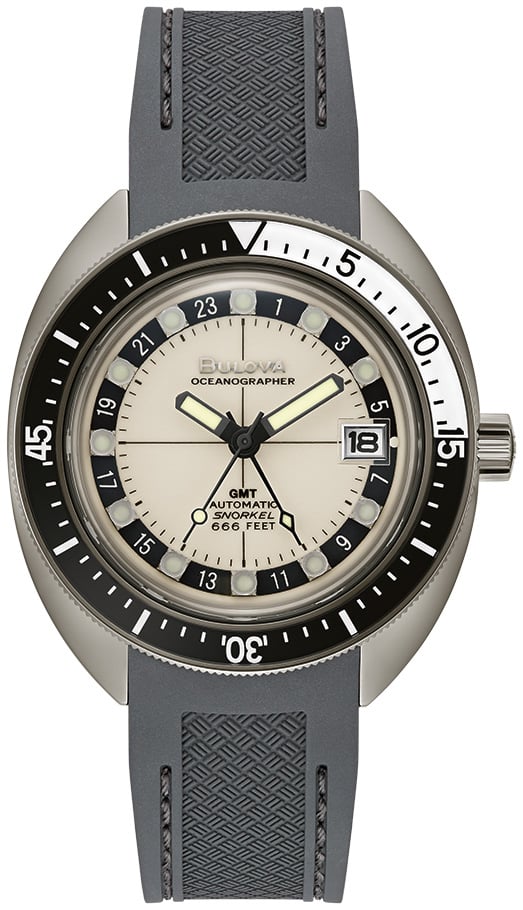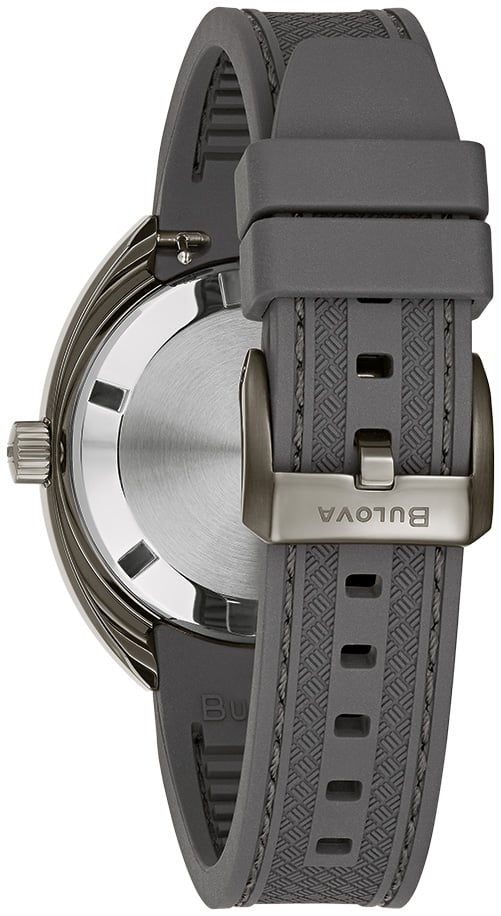Introducing: The Bulova Oceanographer GMT — The Devil Flyer
The market for affordable GMT watches is crowded, to say the least. That’s because this genre of watches is incredibly popular these days. So it is no wonder that Bulova is now introducing a GMT version of its famous Oceanographer re-edition. It comes in three versions — stainless steel “Pepsi,” rose gold “root beer,” and “gunmetal” gray (with a lume dial). But the best part of it all is that it’s powered by the Miyota 9075 flyer GMT movement. Let’s take a quick look at the Bulova Oceanographer GMT, which I will hereby dub the “Devil Flyer.”
The vintage Bulova Oceanographer Snorkel made its debut in the 1970s. You’ll recognize the characteristic C-shaped case that’s so typical of that era. At the time, similarly shaped cases were also used by companies like Doxa and Seiko. However, Bulova added a nifty feature to the Oceanographer’s dial by saying it was water-resistant up to 666 feet. And as the number 666 is often associated with the devil, people nicknamed it the “Devil Diver.” But the Oceanographer is also a beloved watch among fans for its quirky cylindrical hour markers. Those features are all still here, but for the first time, Bulova turned the Oceanographer into a proper travel watch. That’s why I would affectionately rename it the Devil Flyer.
The 41mm Bulova Oceanographer GMT
If you’d like to know more about the original Devil Diver version of the Oceanographer, please check out Mike’s article on his vintage one. In 2020, Bulova introduced a 44mm re-edition of the watch. In his article on that version, Balazs was impressed with what you got for the €599 price. However, it was also quite a big and hefty watch. That’s why, later on, the brand released a 41mm version in a similar size as the original from the ’70s. It’s this version that Bulova has turned into a GMT watch, allowing you can track an additional time zone.
The three versions of the new Devil Flyer all have the same 41mm polished stainless steel case and double-domed sapphire crystal. However, two of them have received an additional ion-plated (IP) coating, one of which is rose gold and the other gunmetal gray. The watches are 14.6mm thick and measure just over 45mm from lug to lug. The screw-down crown sits proudly on the right side of the case and ensures that the watch is water resistant to 200 meters (or 666 feet). Let’s go over the differences between the three versions now because there’s more to them than just a simple change of color.
A bidirectional 24-hour scale or a unidirectional dive bezel
Naturally, the “Pepsi” colorway features a red and blue bidirectional 24-hour bezel. Its dial is also blue, and the hour, minute, and seconds hands are white, whereas the GMT hand is red. The “root beer” colorway, with its rose-gold-tone case and bracelet, comes with a black dial and a black and brown bidirectional 24-hour bezel. Its hour, minute, and GMT hands are also in rose tone, but now it’s the seconds hand that stands out in white. Both these colorways come on a stainless steel bracelet that mimics the shape of the original Oceanographer bracelet from the ’70s.
Then there’s the gunmetal gray version, which stands out the most of the three. Instead of a 24-hour bezel, it comes with a unidirectional dive bezel in black and white. To ensure you can use the GMT hand, the 24-hour scale sits between the hour markers on the dial. It’s a bit crowded, but it works and looks a bit like the numbers on a roulette wheel. Except for the black seconds hand, the hands are painted gray, and the white dial is fully lumed, just like the bezel markings on all three versions. This gunmetal version with that lume dial comes on a gray rubber strap and is definitely my favorite of the three.
A proper flyer GMT
But it’s not just the looks that attract me to the Bulova Oceanographer GMT. It’s also the movement powering the watch that intrigues me. As Bulova is part of the Citizen Group, the brand often uses Miyota movements. Last year, Miyota introduced its 9075 movement, which is a very affordable GMT caliber. But the best part is that it’s not a caller GMT movement with an independent GMT hand like most affordable GMT movements are. No, this is a proper flyer GMT movement with an independent 12-hour hand, just like on your Rolex Explorer II.
To me, that puts it ahead of competitors like Seiko’s recently introduced Alpinist GMT or the SPB381. The Oceanographer’s Miyota 9075 automatic GMT movement runs at 28,800vph and offers a power reserve of 42 hours. It can both be hacked and manually wound, and its accuracy is supposed to be somewhere between +30 and -10 seconds, but I hope it’s a little more accurate than that.
What do you think?
I think the GMT function suits the Bulova Oceanographer nicely. It’s clear that the three designs have been thought through quite well. I only wish that the GMT hand stood out more on both the gunmetal gray and rose gold versions. But other than that, I think these watches look great and offer a lot for the price. The gunmetal gray version on the rubber strap will cost you US$1,295. The “Pepsi” version is priced at US$1,350 on the quick-release stainless steel bracelet, which includes a dive extension. And the rose gold version will set you back US$1,395 on the matching rose-tone stainless steel bracelet.
In Europe, I’ve seen the gunmetal gray and “Pepsi” versions being announced for as little as €849. That seems like a very big difference from the North American prices, though. I’ve asked Bulova for feedback on this and will report back when I get a response. Until then, for more information, please check out the official Bulova website.
Let me know in the comments what you think of the new Bulova Oceanographer GMT, aka the new Devil Flyer.

